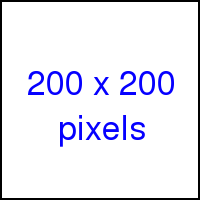Pixels per inch facts for kids
Pixels per inch (PPI) is a way to measure how clear a screen or image is. It tells you how many tiny pixels are packed into every inch of a display. Think of it like how many tiny dots make up a picture on your phone or computer screen. The more pixels per inch, the sharper and clearer the image will look.
PPI is also called pixel density. It helps us understand the resolution of screens like those on computers, smartphones, and tablets. It's different from dots per inch (DPI), which usually refers to how many dots a computer printer can print.
Contents
What is PPI?
PPI stands for "pixels per inch." It measures how many individual pixels fit into one inch of a screen. Imagine a tiny square that is one inch wide and one inch tall. The PPI tells you how many pixels are lined up across that one-inch space.
For example, if a screen has a PPI of 100, it means there are 100 pixels in every inch. If another screen has a PPI of 300, it has 300 pixels per inch. The screen with 300 PPI will show much finer details because its pixels are smaller and closer together.
How is PPI Calculated?
To figure out a screen's PPI, you need two main things:
- The screen's resolution (how many pixels it has across and down).
- The physical size of the screen (its width and height in inches).
Most often, PPI is calculated using the screen's diagonal size. This is because screens are usually measured diagonally.
The Math Behind PPI
Here's how the calculation works:
- Find the screen's horizontal pixel count (Pw) and vertical pixel count (Ph). For example, a screen might be 1920 pixels wide and 1080 pixels tall.
- Find the screen's diagonal size in inches (di). This is the measurement you see when buying a TV or monitor, like 27 inches.
- Use the Pythagorean theorem to find the diagonal pixel count (Pd):
* Pd = √ (Pw² + Ph²)
- Then, divide the diagonal pixel count by the diagonal screen size:
* PPI = Pd / di
So, if a screen is 1920x1080 pixels and 21.5 inches diagonally, its PPI would be around 102.
Why is PPI Important?
PPI is very important for how clear and sharp images look on a screen.
- Sharpness: A higher PPI means more pixels are packed into each inch. This makes images and text look smoother and more detailed. You won't see individual pixels, making the picture appear more realistic.
- Viewing Distance: For screens you hold close, like phones, a high PPI is crucial. Your eyes can easily spot individual pixels if they are too big. For screens you view from far away, like a large TV, a lower PPI might still look good because your eyes can't distinguish the tiny details from a distance.
- Gaming and Graphics: Gamers and graphic designers often prefer screens with high PPI. This helps them see fine details in games and designs, making the experience more immersive and precise.
PPI in Different Devices
PPI matters differently for various devices:
Smartphones and Tablets
These devices are held close to your eyes. So, they need a very high PPI to look sharp. Many modern smartphones have PPIs over 400 or even 500. This is why text and images look so smooth and clear on your phone.
Computer Monitors
Computer monitors are usually viewed from an arm's length away. A PPI of around 90 to 110 is common for desktop monitors. However, many newer monitors, especially those used for professional work or gaming, have much higher PPIs for better detail.
Televisions
Televisions are typically viewed from several feet away. Because of the greater viewing distance, TVs don't always need extremely high PPIs to look good. A large 4K TV might have a lower PPI than a smartphone, but it still looks great from your couch.
PPI vs. DPI
While often used interchangeably, PPI and DPI are slightly different:
- PPI (Pixels Per Inch): This refers to the density of pixels on a digital display or in a digital image. It's about how many pixels are in one inch of a screen.
- DPI (Dots Per Inch): This refers to the density of ink dots that a printer can place on a physical piece of paper. It's about how many tiny ink dots are in one inch of a printed image.
So, PPI is for screens and digital images, while DPI is for printing.
Other Uses of PPI
PPI isn't just for screens. It's also used to describe the resolution of:
- Image Scanners: When you scan a photo, the scanner captures it at a certain PPI. A higher PPI scan means more detail is captured from the original image.
- Digital Cameras: While cameras often use megapixels (millions of pixels) to describe their resolution, the concept of pixel density is still important for the camera's sensor.
Understanding PPI helps you choose the right screen or device for your needs, ensuring you get the best visual experience.


